Eighteen years’ worth of artist’s paint rags and a camper van were the stimulus for Patricia Brown to find a new craft that she could do in a small space.
Having salvaged old paint-daubed cloths from a bucket in her New York studio, Patricia purchased the whole gamut of colours in the DMC embroidery floss range and proceeded to spend several weeks merging with the essence of her rags. She set off on her travels with an eagerness to stitch, despite many years of absence from the craft.
With inspiration along the way from different stitching styles, artists, and even a spiritualist choral group, Patricia taught herself to integrate her gestural approach to abstract painting into her hand stitchery. It resulted in her Remnants series of stitched textiles.
Stitching and switching to a new craft
Patricia Brown: Recently my husband and I purchased a small camper van so we could explore the world of birds in Florida during the winter months. In this adventurous spirit, I searched for a new craft that I could carry on my journey.
I hand sewed small birds from old handkerchiefs and embroidered little felt badges of the birds we were admiring throughout our travels. My confidence in making art through stitching grew as I drew and crafted each bird. I didn’t have to know a library of sophisticated stitches to be successful; I could apply my drawing and painting skills. I enjoyed the stillness, working with one little stitch at a time, anywhere I wanted.
I decided to build on this by researching approaches to embroidery beyond the ‘sampler’ roots I had been taught as a child. That’s when I remembered Boro cloth.
A few years ago, I saw Chiharu Shiota’s ‘Traces of Memory’ at the Mattress Factory in Pittsburgh. In her overwhelming, yet delicate, installation I found the thread of her story and the power of thread to voice story as I walked through this house full of haunting rooms.
More recently I found Junko Oki, a contemporary Japanese artist who stitches in an embellished Boro-related style.
Boro cloth is a form of hand sewn mending done by Japanese peasants in tending to clothing passed down through generations. In Boro, layers of indigo patches hold threadbare fabrics together, to preserve the garment so it can be worn over and over again. Repair upon repair created design out of necessity. What had once been a sign of poverty, became an object of beauty.
Oki says: ‘When you are stitching, you can go sideways if you like. Even if you end up with a tangled-up thread, you don’t have to cut it off, you can leave it to create a new pattern. In other words, the path is endless and you can keep on going – no turning back.’
I am amazed by Oki’s raw, spontaneous approach and work to incorporate this freedom into my Remnants.
I was never particularly good at making the ‘perfect’ stitch my class leader wanted, so Boro suited me down to the ground.
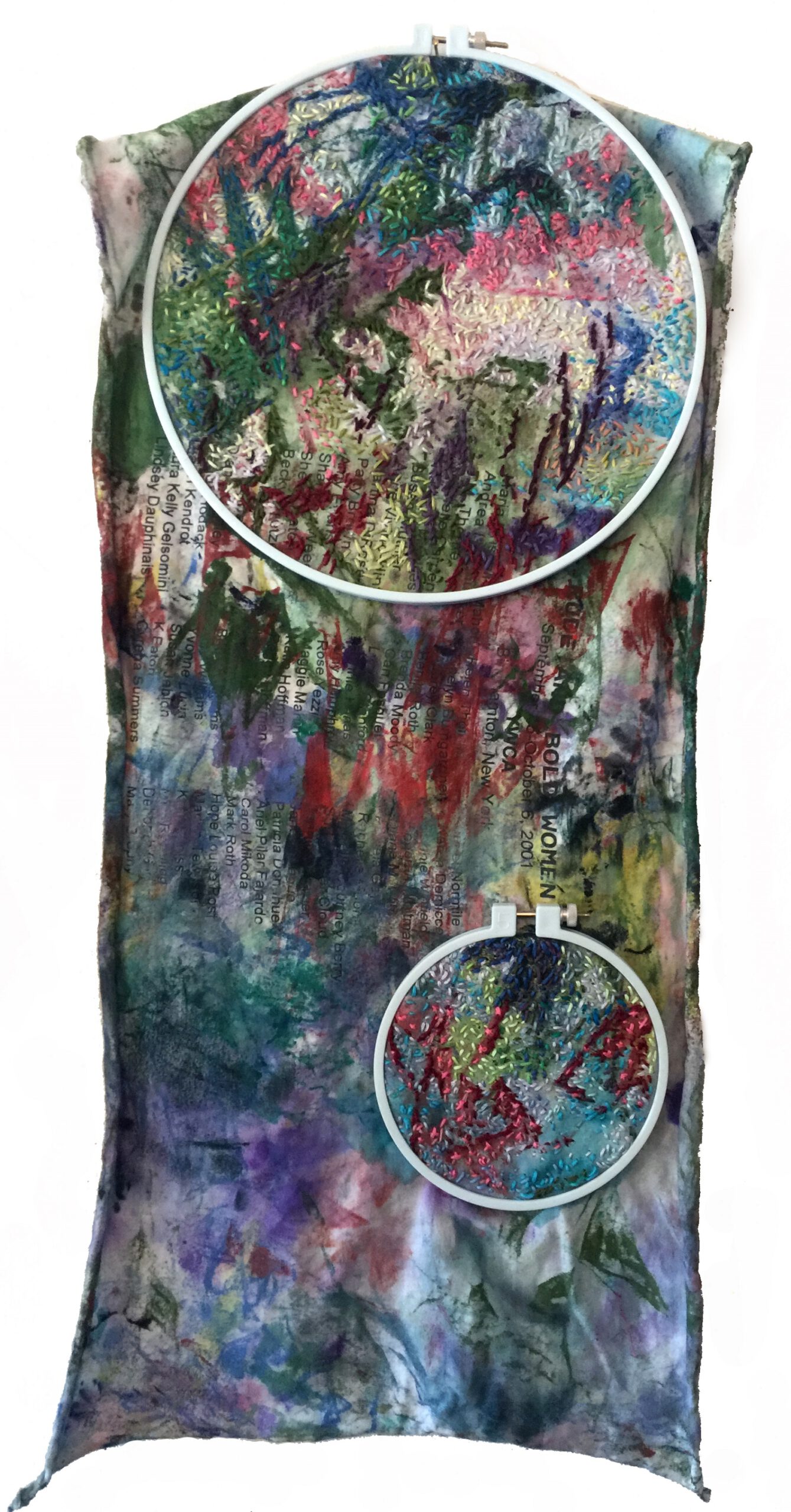
Out of a bucket
Boro freed me with its simple, often uneven, stitches which appeared haphazardly placed.
Having found my stitch style, I now just needed something to stitch onto. I knew that I enjoyed working on found fabrics because they already held energy. As I looked around, I remembered that I had been saving my painting rags for years. I just could not throw them away as I found them striking, quite apart from the paintings they had helped me to create. I pulled them out of their buckets and quickly placed embroidery hoops in places that drew my attention.
I filled the studio with these colourful rags. I experimented with various sizes and placements of the hoops, letting the rags dangle off the edges.
I decided I was going to stitch onto my rags! I was exhilarated knowing I was discovering something autobiographical and historical, while simultaneously revealing something new.
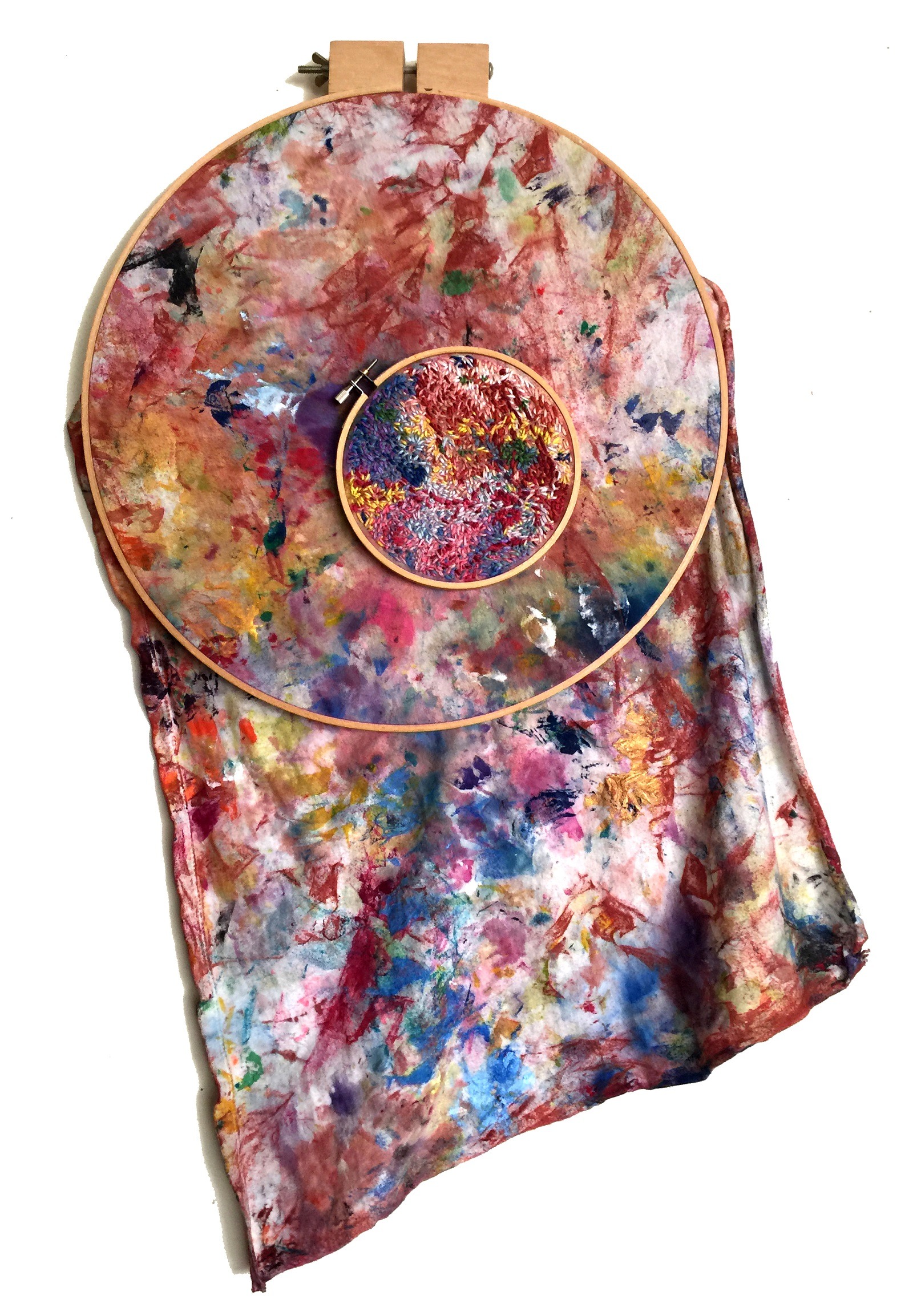
Remnants are beautiful
When I began my Remnant series, I was stitching into colourful rags, considering the design elements. Over time, I began to understand how these scraps of cloth related to me personally, narratively and symbolically.
My old splattered, smudged and torn paint rags contained dynamic markings that record years of my studio practice.
My rags had been used over and over again and I had stowed them away in a paint bucket, never quite sure what I would do with them. These paint rags were once worn as t-shirts – from a vestige of shows and events that I had been a part of since 2001 (Remnants 1 and 2). Some had performed functional tasks such as cleaning my brushes, hands, tabletops, easels and clothing. They hold traces of paint that stained them as I smudged, wiped, smeared, and removed paint from the surfaces of abstract paintings.
Most artists would have discarded these – their cleaning cloths – as rubbish, but I could not.
With certain Remnants, I recalled studio experiences and paintings that had been forgotten. Transforming them into artworks became an exploration of self: a way of finding beauty in each remnant was an act of finding beauty in myself. I found beauty beyond the surface – it was in history, story, memories, smudges, marks, scars and hidden places. They are a part of me, and I am a part of them.
Once I was able to see myself in the Remnants, I was able to see others. While working, I often listened to the daily news, cringing at our leadership’s poor treatment, rejection and belittling of ‘unwanted’ people.
My stitched rags began to represent the ‘dregs’, ‘fags’, ‘rubbish’, ‘leftovers’ and ‘cast-offs’ of our society, who all deserve to be recognised and cared for.
Now I stitch hope for all to be seen for their inherent beauty. To spread this message, I offer ‘Remnants are Beautiful’ stickers to gallery viewers.
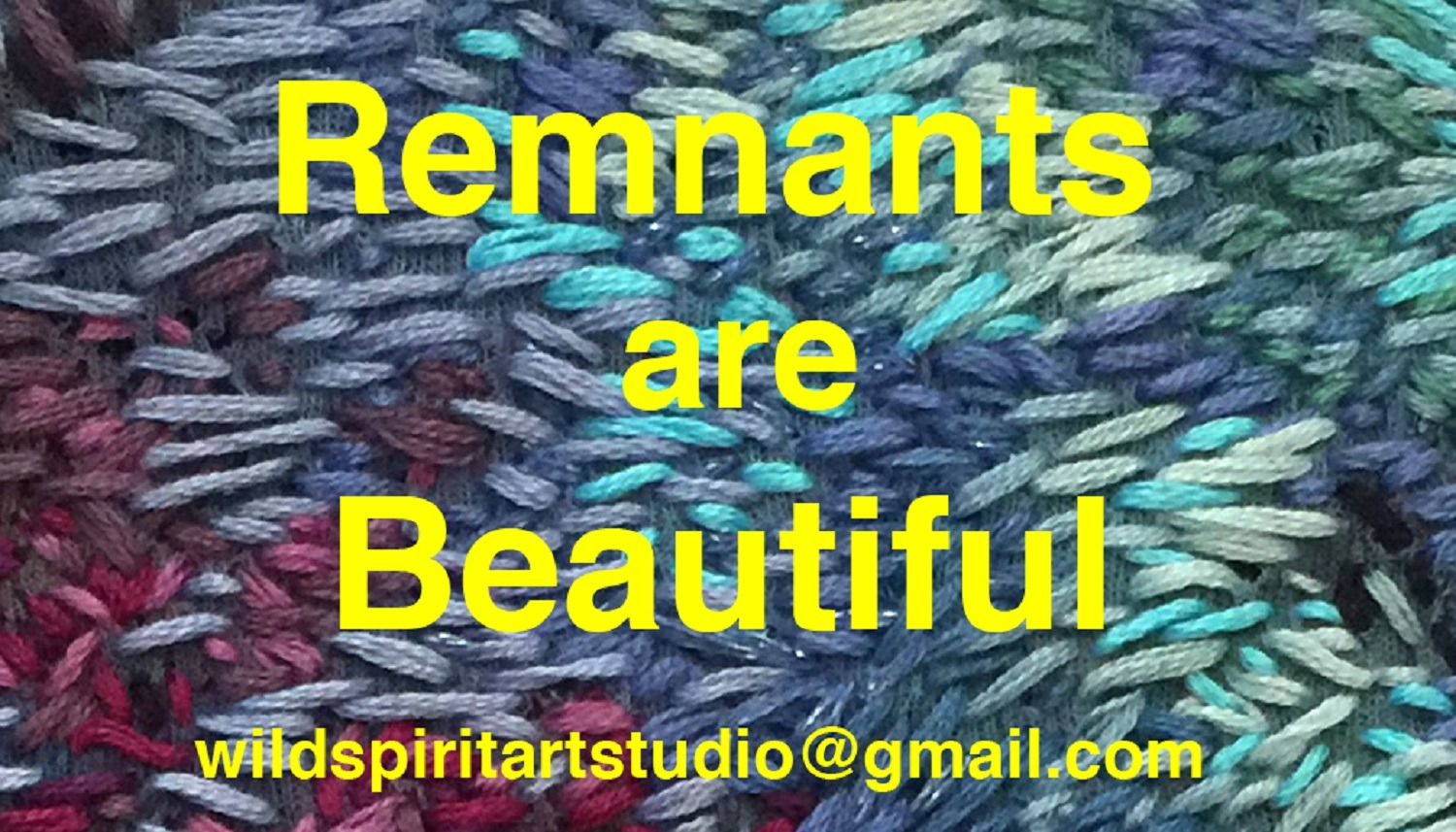
Every summer for ten years, I studied with artist mentors Timothy Hawkesworth and Lala Zeitlyn through drawing workshops at Art New England. They emphasised painting from the heart, being in the moment, entering the canvas bravely and sincerely, and trusting how the body responds.
As I worked, I asked myself: ‘Am I lifted by this approach?’ And if the answer was yes, I kept going.
Whilst stitching the Remnant series, I had been reading Clarissa Pinkola Estes’ book Women Who Run With the Wolves with a group of artists. Each fairy tale calls for us to examine various challenging archetypes within ourselves and in the culture. Through this deep understanding of character and metaphor, I was able to look at my paint rags as narrative symbols.
From rags to art
Years after their useful life, these rags are my teachers.
In the series, I integrated my gestural approach to abstract painting into my hand stitchery.
I have an agreement that, as I stitch, I will follow each rag’s structure and design. I accept the rag ‘as is’ and never add paint to it. Each rag demands a different colour scheme and an animated approach to the direction, length and shape of each stitch. In honouring the formation of each rag, I locate beauty in what would ordinarily be discarded.
The first step in each Remnant was to determine the area to focus on within the hoop.
I looked for the section of each rag that lifted me with its dramatic line, shape and colour relationships. I explored many strategies to decide how to let the fabric drape off the rim: hoops within hoops, multiple hoops, fabric hanging straight, and hanging off to one side. I played with the captured remnants in my studio for weeks before making final commitments. Eventually, the specific composition held a certain interest and tension and it felt right – I kept going.
The second step was to find the colour scheme that worked best for each Remnant. I purchased every one of the 400 colours in the DMC embroidery floss collection – the choice of a very particular shade was vital. It was like getting my first box of 64 crayons as a child. I wound all the floss onto bobbins and stored them in plastic containers. When selecting colours for a rag, I surrounded the rag with these containers and began pulling colours, gathering a ring of them for each rag. At one point I filled my entire studio with rags and their corresponding bobbins, each a unique colour scheme. I sat with them for weeks before the stitching began. When I show this work, I hang up a Remnant Bobbin Rack and invite viewers to match the colour bobbins to the Remnants, encouraging them to look very closely.
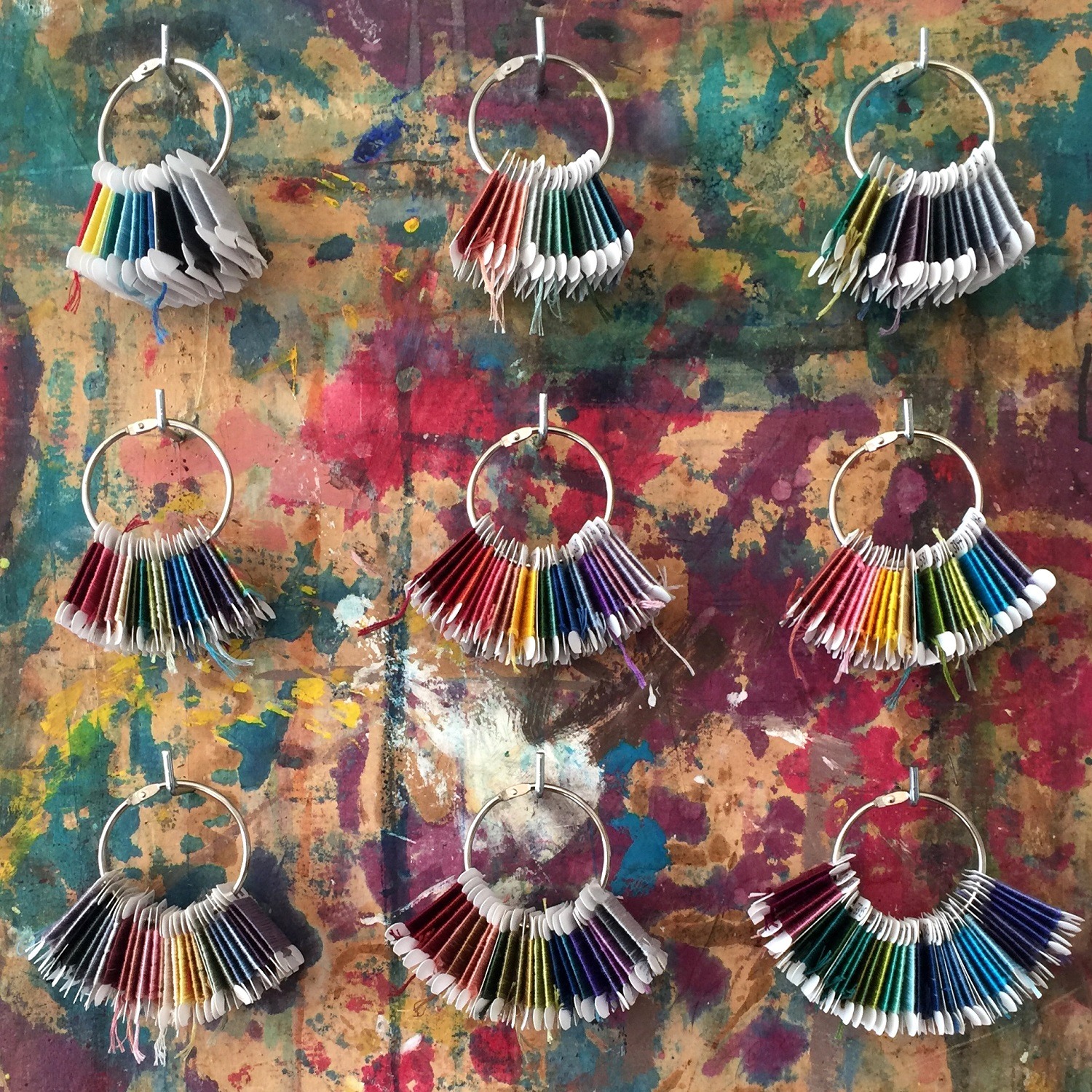
Asking questions
Once I selected the colour scheme, I gazed at the paint markings within the hoop and looked for the big picture. What kind of movement dominated? What was the counter-current? What required big marks? Small stitches? What direction did each stitch require? What areas needed stitching? What areas should I leave alone? How did this focus area interact with the rest of the rag outside of the hoop?
I began with the design aspect I wanted to emphasise, then all other stitches supported it. This is exactly how I paint. Once I see a big picture, I work spontaneously trusting each small decision along the way. I revel in stitching – the real joy in this ‘one little stitch at a time’ process.
Occasionally the big picture in a rag suggested an image in the real world to me. In Remnant 11, Overlook Falls the colour scheme and the long vertical format with small angled hoops looked like a waterfall to me. I worked with this idea to complete the image, letting the threads flow out from the bottom.
I invite viewers to create mindscapes through my abstract arrangement of colourful threads and gestural stitches.
I presented the Remnant series in a show titled Textures at the State of the Art Gallery in Ithaca, NY. Through research, I discovered that ‘text’, from the Latin verb ‘texere’, means to weave and intertwine. My friend, novelist and poet Lisa Harris – a constant inspiration to me – says: ‘Words are chosen and discarded, lined up, rearranged or thrown away while I work to create textured landscapes for the reader or listener to enter. Readers or listeners participate in a symbiotic relationship with the words a writer crafts, creating pictures in their minds.’
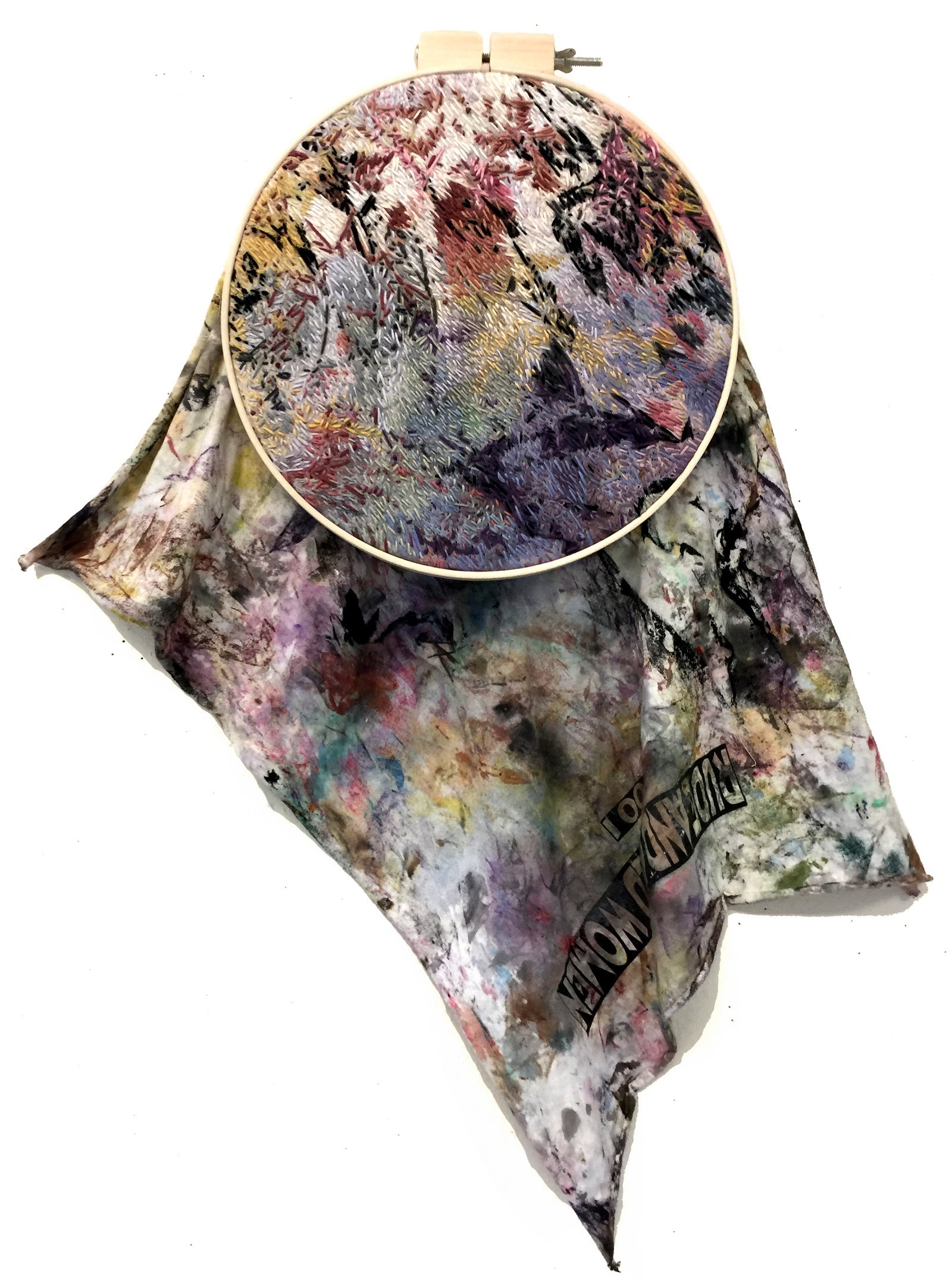
Vibrating with colour
I stitched Remnant 4: Jubilee while on tour with the Dorothy Cotton Jubilee Singers, a choral group dedicated to the preservation of Negro spirituals. We travelled down to Goldsboro, North Carolina, the birthplace of civil rights leader Dorothy Cotton, to honour her life in her hometown.
Dr William J Barber II and the Greenleaf Christian Church community welcomed us and spoke passionately about the hope and faith that spiritual songs give our spirit. He described how the songs must be sung with the whole body and told us that they were sung in mass meetings before the descendants of enslaved Africans marched and were beaten on the Edmund Pettus Bridge. He said that the songs brought them together so that they became one person. He used a term ‘to worry the line’ meaning that the singing of the words introduced something extra into the song.
I stitched for two days on this paint rag as we drove south, simply following the colours in the cloth while I watched the landscape change outside the window.
On the return, I ‘worried’ the colours. I spontaneously stitched darker, lighter, brighter, duller, complementary and analogous colours that hung around those present on the rag. I layered in the energetic loving spirit of singing together, Dr Barber’s words, and the palpable joy of everyone present as we honoured Dorothy Cotton. I worked until the colours vibrated in the same way as the church did while we ‘sang out and marched on’.
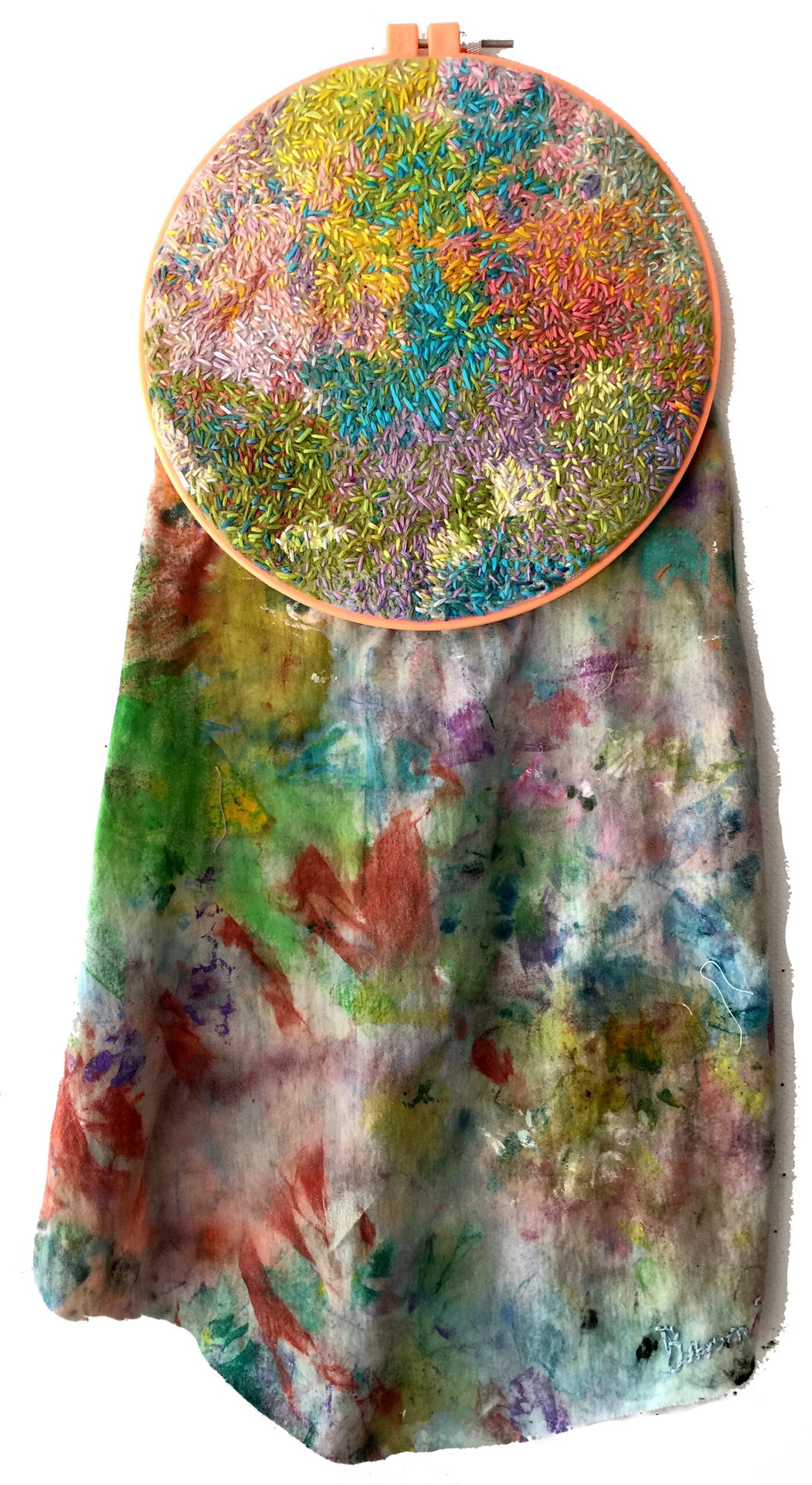
Creativity in childhood
I grew up in a very creative rural household; the handmade life was highly valued. My father was a creative farmer, builder, artist, gardener and cook. My mother filled me with stories. My mother, grandmother, and aunts were constantly sewing, knitting or stitching clothing or decorative pieces. My grandmother sewed my Barbie doll clothes.
Quilts were handed down from many older generations. All family members pitched in to create our holiday decorations and gifts.
My most memorable interest in fibre was macrame – I made belts, owl necklaces, plant hangers, wine bottle holders, and decorative hangings for all of my friends and relatives. I can’t say that I saw all this creative work as art – it was how we enjoyed life and shared with others.
Most of the strong women in my life were teachers. In high school, I took several art classes and in my senior year became a teaching assistant in the middle school art class. I began to see the importance of my creative upbringing and went to college to study art education.
I have guided thousands of children in developing their creative lives. I spent most of my career at the high school level, where my goal was to help each student develop personal ideas through a series of related artworks. I constantly researched new ways of working to support the processes of each individual. While teaching, I challenged myself in the same way – and I have done ever since.
Read about other artists who have recycled and reused materials in their textile art.
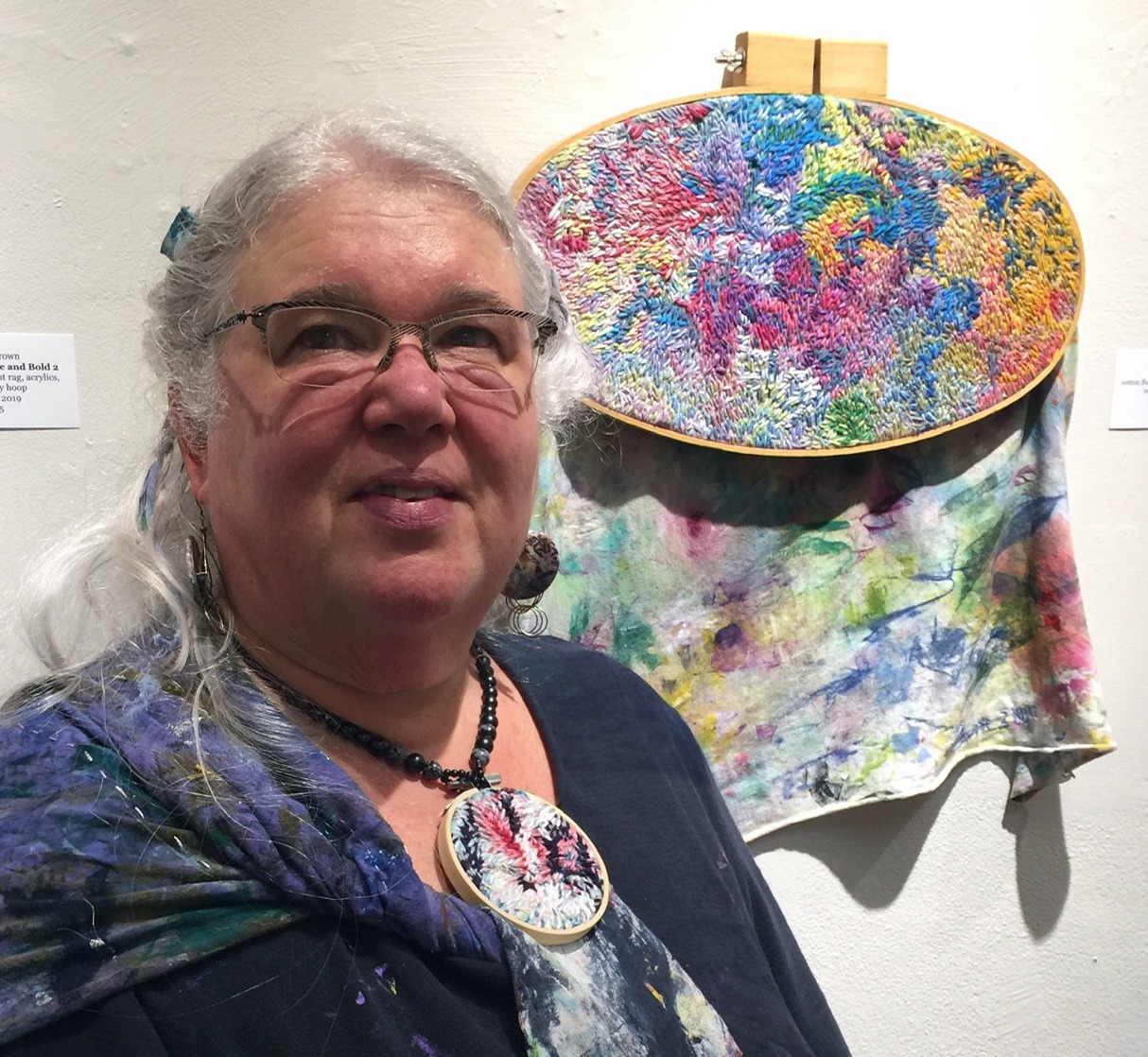
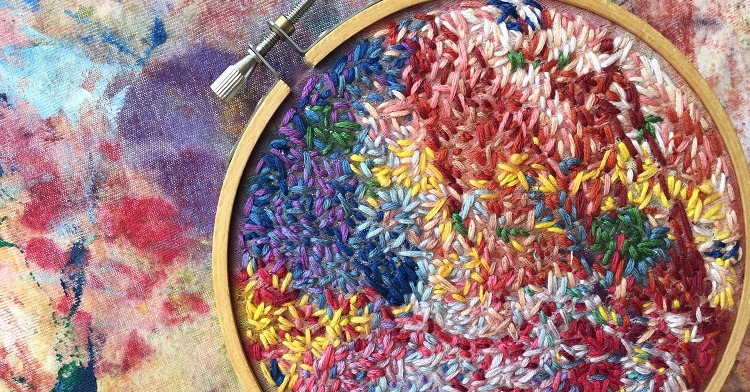

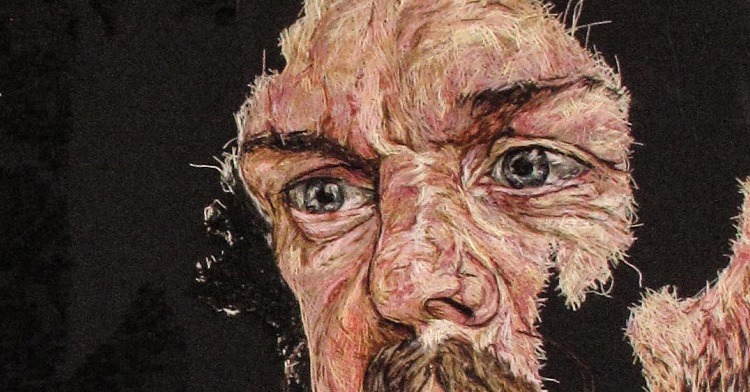
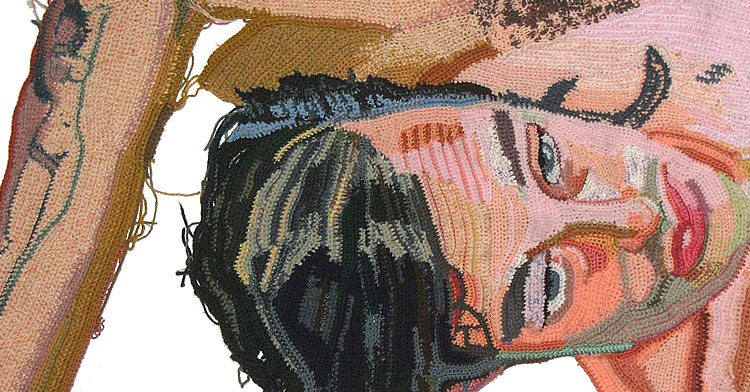
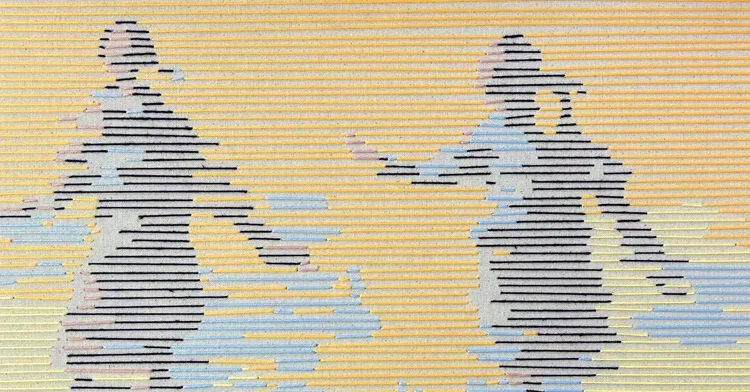
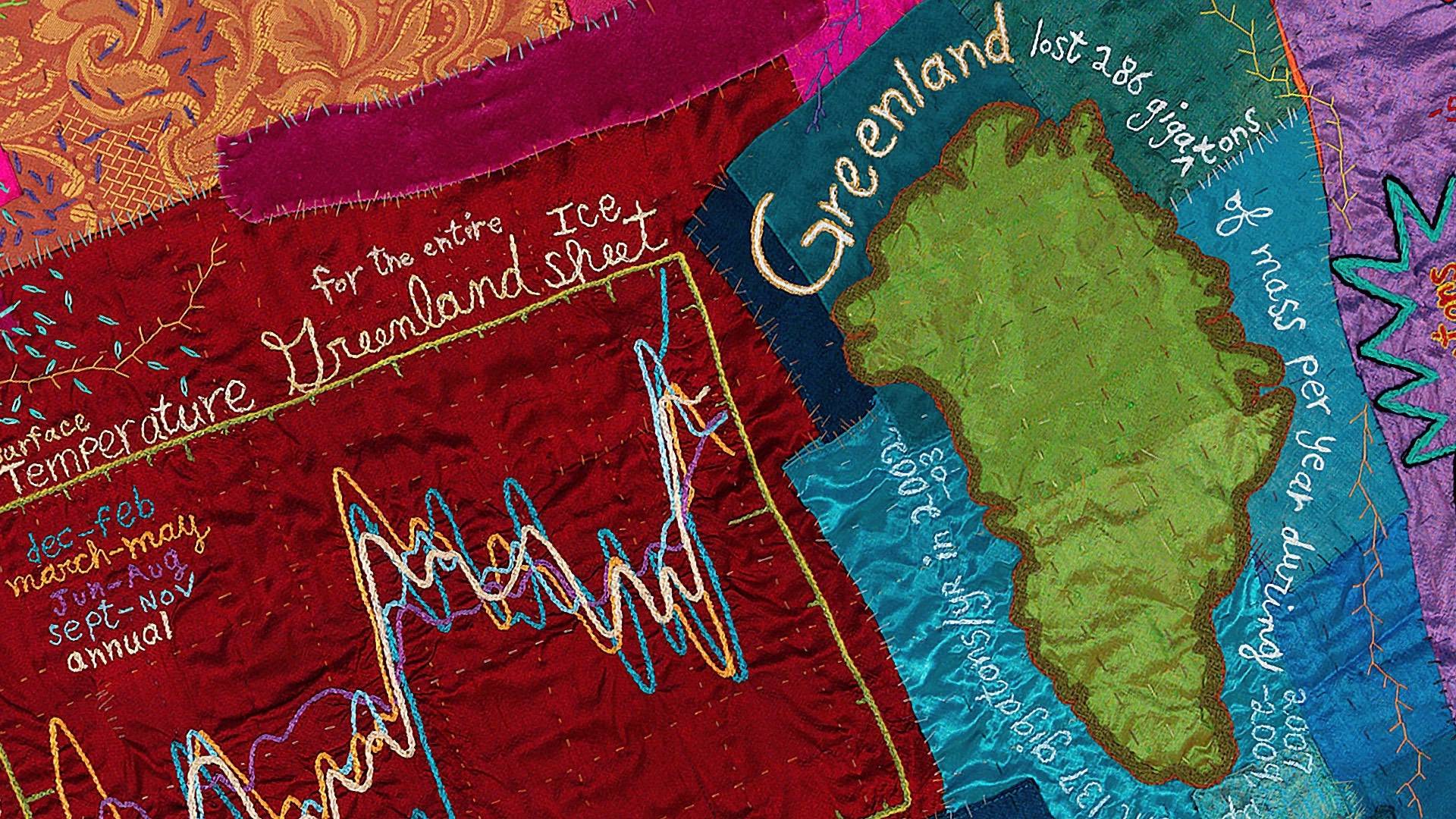
![Contemporary textile artist Lisa Soloman featured image||Lisa Soloman - Sen [1000 doilies]](https://www.textileartist.org/wp-content/uploads/Lisa.jpg)
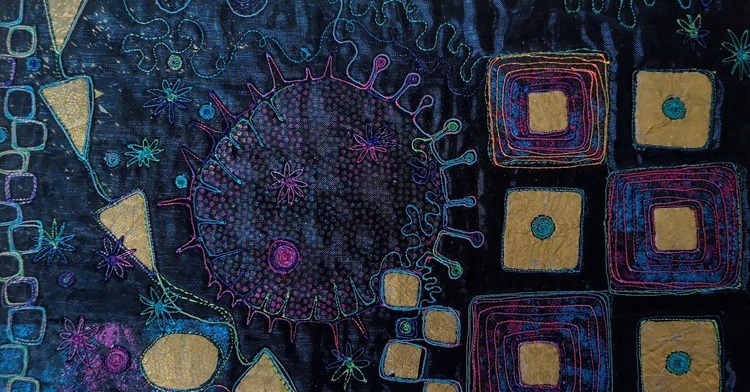
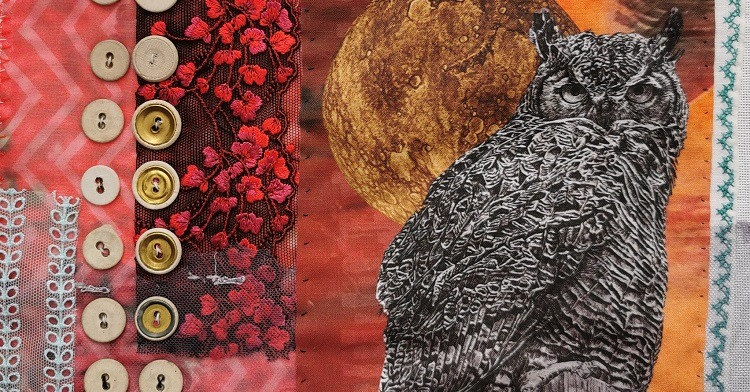
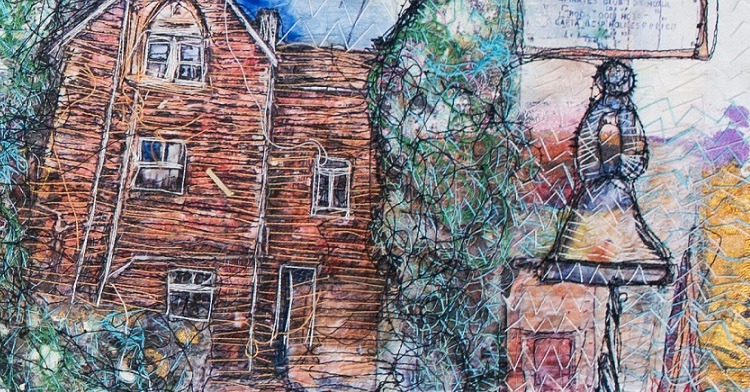
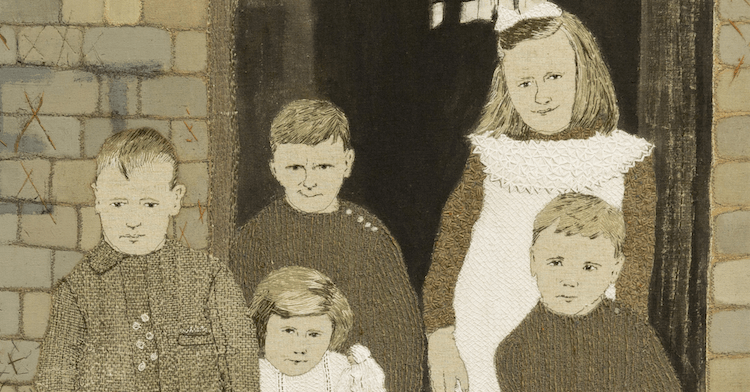
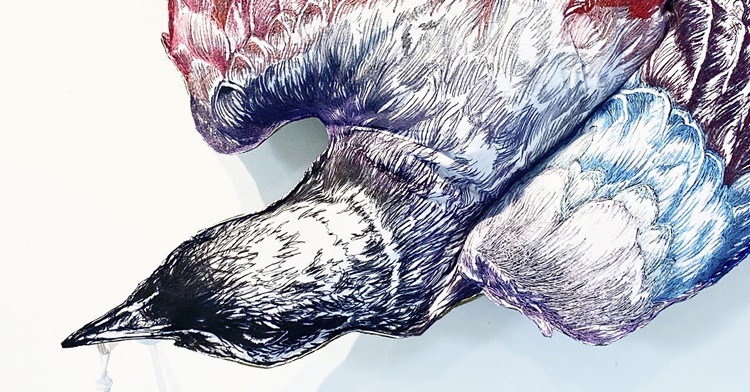
32 comments
Darren Cornthwaite
Hia i have had a barn owl painting that is on a bit of drift wood from the river Alto
It has got your name on it i was wondering if it is one of your paintings
I can send a few pics over if you email me
regards
Darren
Susan Imp
Hi Pat, In 1980 I was inspired by my teacher/friend Pat Brown. The creativity has endured through the past 42 years. If you were that Sidney High School mentor, Thank you so much. Sincerely, Susan Reed Imp
Philippa
I really was inspired by Patrica”s article and can’t wait to have a go. Its simple but so effective
Christine
What a feast of colour. Great article.
Helen Lenihan
What a wonderful idea and so beautifully brightly coloured.
Miranda Dixon
This is just wonderful!! Thankyou!
Liberty Worth
This was encouraging artistically, emotionally and spiritually. Thank you. Your work is profound and lovely. It’s wonderful to learn about you and your inspiration artists – as a younger, less experienced textile artist, I’m deeply moved by all of your experience and passion.
Cathi Johnson
Your work is just lovely! And your thoughts are inspirational! Thank you so much for sharing…you have motivated me to dig out my huge collection of floss and bag of scraps and give it a whirl! 😉
Robin Hahn
Pat, this article really gives insight into the depth, emotion, sensitivity and spirit of your beautiful work. I will re-read again (and again) to gain inspiration. You are a wonderful artist.
lisa Harris
You rock, Patty Brown.
Your conceptual framework–the complexity, the simplicity, and the result–are inspiriting.
Yvonne Lucia
Congratulations Patty! I am thrilled that this project is being shared with a wider audience. The layers and depth of meaning interwoven throughout each piece and the her-story of your evolving art and process move me deeply. I appreciate these works as visual meditations and even prayers that celebrate the sacred in the humblest of places…discarded rags as revelation…Thank you!
Rosemary Claus-Gray
I thoroughly enjoyed your interview. I especially loved your description of your process, doing, thinking and reflecting on the meaning for you as the piece evolves. I humbly say that my process is similar in some ways, and it is encouraging to me to find a kindred spirit. Thank you for sharing, and for the eloquent description of what you do.
Elizabeth Ewing
These are soul inspiring and awakening pieces. Patricia’s interview itself inspires and encourages others to look inward and outward and boldly express what is there. Thank. you for the wonderful photographs which capture the beauty of her art.
Mary Sze-Tu
So so so happy – thrilled! – our group had any small part in your process. It’s fascinating to read the development of your work, but honestly, I fully and completely took in the simple beauty of them from your first sharing.
Wonderful to hear the meaning and depth you experience with your creation of these, and still, to me I find joy in the color and art of the pieces. Art as a verb.
Annie Crane
What a truly wonderful article. Thank you Textile Artist and Patricia! I look forward to finding your
Pinterest page. Your work is wonderful. Thankful for the inspiration you have brought me today!
Catharine Riley
Awesome! Enjoyed the article and the beautiful work! Who would have thought, paint rags!
Gloria Hansen
Absolutely marvelous — thank you for sharing your story and art. It resonated and inspired in many levels, and I truly enjoyed.
Margaret Heywood
Loved these using old ” textiles ” & remnants gives work depth & extra meaning but loved that these were old paint rags. Also I’ve just been feasting on all the links in the articles so much to follow up & explore. Thank you
Philomena McKendry
I found this article very interesting, and Patricia very inspirational. I did something sort of similar years ago.
Toni Kelly
These are great. I am also a paint artist, and embroiderer and was wondering what the back of these works look like.
Great reading and inspiring.
Patricia
The backs are as complex as the front, yet more gestural and raw.
Susan MacKay
Exquisite art, and beautifully photographed. Great interview. Loved hearing about your early family life and seeing this ‘inner life’ art downsized to travel in a camper van for bird watching in Florida. How cool can you get? So pleased to see this meditative art, posted to my email by a a Dorothy Cotton Jubilee singer; I remember you more specifically from a trip to DC with one of your art students in the late 1980s. ¡A su salud!
Patricia
SUSAN, So good to hear from you, it has been a very long time. Thanks for your wonderful comments, P
Carmen
Loved this article and this artist’s work!!! I am an avid embroiderer and her story really inspires me. How she saw the beauty in the cast offs, and her mention of how the trip to sing fed her heart and soul, wonderful.
Jan Smith
What a wonderful interview about this artist.
So inventive and colourful it makes your heart sing.
Such a true artist in the sense of the word. !!
Thank you textile artist.
Margot
Really amazing
Gloria McLean
A very beautiful moving and inspirational story.
Her colours vibrate and it feels like her heart is in every stitch. Love the work and the ideas behind it.
Isobel M Legacy
Wow
Such beautiful art work. A visual treat that spreads to the heart and soul.
Well written article as well.
I. Legacy
Linda
Really inspiring and heartfelt – thanks!
abby Chapple
I am so impressed and Inspired!
Sandie Hutchins
I love this it is so inspirational.
christine mountford
Thank you for this wonderful article ,Patricia’s textiles are beautiful and a feast for all the senses. I enjoy all your articles but there are some that feed my soul and I know I will return often to this page to gaze and be nourished.